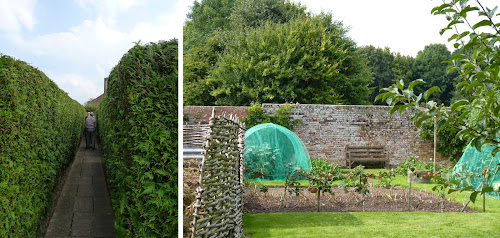Truffle trouble | Environment | The Guardian:
But just how acceptable is all this foraging? Do people have the right to pick mushrooms, at least on open-access land? Does the landowner have the right to stop us? More fundamentally, does any of it do any harm to the environment? Or is mushroom picking the ultimate sustainable activity?
The nearest thing to a national policy is the code of conduct published by English Nature, the wildlife watchdog. It is all right to pick, says English Nature, provided you ask the landowner and stick to the code. Rare species should not be picked (but what's a rare species?), nor should we gather more than 1.5kg (fresh weight) per day from any particular site. Scotland has a similar code, issued by Scottish Natural Heritage. Both bodies are relaxed about picking for the family pot, but frown on commercial picking.
But frowning is one thing, prosecuting someone is another. Can we have open access and yet ban mushroom picking? In theory, we can. Any landowner can apply to the local authority for an order against blackberry pickers, moss gatherers or butterfly collectors. In this land of the free, any of Mother Nature's bounties, even the meanest, sourest berry or nut, is deemed to be private property.
In the case of the New Forest, which is managed by the Forestry Commission, the Department for Environment, Food and Rural Affairs (Defra) decided that it owned the mushrooms. In the 1990s, it banned commercial picking over the entire forest, and banned foraging for mushrooms altogether in certain woods.
But what about the legislation on conserving wildlife? Is there a legal way of challenging commercial pickers if they damage a mushroom's natural habitat?
Quite possibly not. The limited protection offered by sites of special scientific interest (SSSI) relates to the specific plants, animals and natural landforms cited in the formal description of the site. And, as English Nature admits, very few of these mention fungi. Out of 4,000 SSSIs in England, only a handful mention fungi, and only one is designated specifically because of its outstanding fungus flora. A prosecution based on our statutory system for protecting wildlife would be difficult to prove.
Is that a problem? Does picking damage the mushroom's prospects? Tee-Hillman insists that mushrooms actually benefit from picking. "I pick the brown chanterelles every 10 days from the same place," she says. "By making sure I don't damage their root system, I can get a new crop every 10 days for up to three months."
Where problems arise, it is not from careful picking but from felling trees and damaging the delicate upper layers of the soil where the fungi thrive. "Wherever the Forestry Commission has cut down the trees we won't be seeing the mushrooms again for hundreds of years," she says.
Michael Jordan, author of The Encyclopaedia of Fungi of Britain and Europe (1995) and founder of the Association of British Fungus Groups, has no problems with picking for the pot, but he would "personally err on the side of caution".
He says: "You get figures bandied about from both camps, but we don't know whether there is damage or not. What we are seeing, though, is a massive depletion of the countryside. Hoovering up the mushrooms robs the countryside of a beautiful feature for people to see and enjoy."
So there we are. Commercial picking may or may not harm the fungus. But no one objects to mushrooms being picked for the kitchen pot.
- Four Fs (legal): Fruit, foliage, fungi, flowers.
'via Blog this'




















